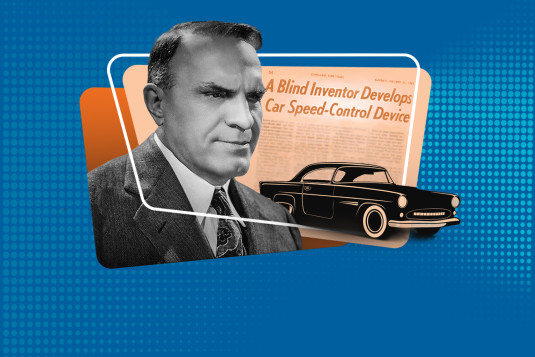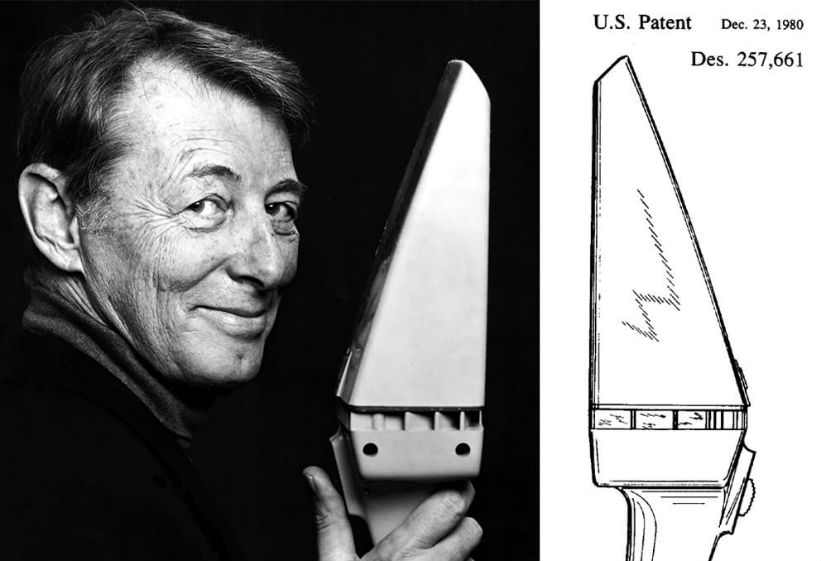
Moondust and marketing magic
In 1979, Black & Decker introduced the Dustbuster®—a cordless, rechargeable, hand-held vacuum cleaner that is still popular 40 years later.
Less known is the story of the product’s evolution from earlier innovations and its origins in the “space race.”
8 min read
Each month, our Journeys of Innovation series tells the stories of inventors or entrepreneurs who have made a positive difference in the world. This month, Laura Larrimore's story focuses on the origin story of the Dustbuster, the Space Age technology that led to its creation, and the contributions of lead designer Carroll Gantz. To learn about other historical inventors and their creations, check out Innovators of the past.
Do you know an innovator or entrepreneur with an interesting story?
In 1961, President John F. Kennedy famously called for “landing a man on the moon and returning him safely to the Earth.” Eight years later, on July 20, 1969, Neil Armstrong stepped out of the Apollo Lunar Module Eagle and onto the surface of the moon. The ambitious national effort that made such an extraordinary feat possible also generated a flood of “downstream” innovations that soon found their way into the homes and businesses of ordinary Americans. From quartz-powered wrist watches to building insulation, many consumer products we use today have their origins in the space race. Few were as commercially successful as the pint-sized cleaning tool with a big name: the Dustbuster®.
“A successful consumer product is not the result of an instantaneous flash of genius that many imagine.”
Before Armstrong could take his "one small step for a man, one giant leap for mankind"—before, in fact, the National Aeronautics and Space Administration (NASA) could even plan on sending him to the moon—there was a pressing need for power tools that could be safely operated in space. NASA’s scientists and engineers were particularly concerned about cords, which could easily entangle astronauts in the weightlessness of zero gravity.
To solve that problem, NASA awarded Black & Decker (B&D)—a household company name since 1914, when S. Duncan Black and Alonzo Decker invented the first hand-held electric drill—the contract to develop a cordless, rechargeable drill for extracting core samples from the moon. Using battery technology created by General Electric, B&D had already begun experimenting with cordless tools, including the world’s first rechargeable drill in 1961.
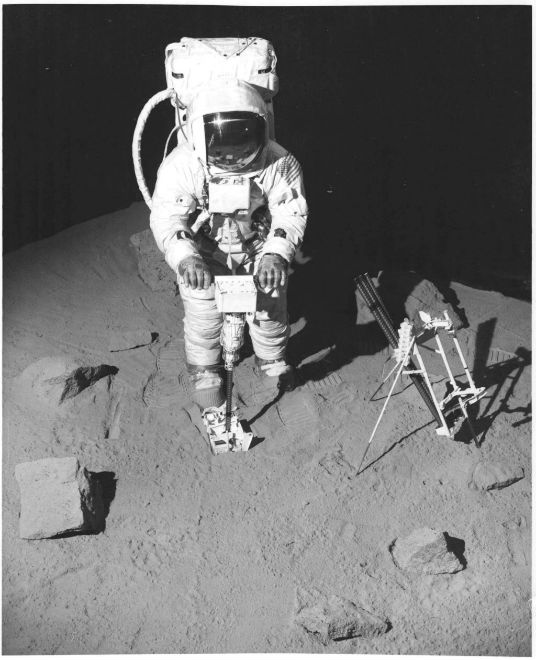
Top image: Carroll Gantz, lead designer of the Dustbuster and Fellow of the Industrial Designers Society of America (FIDSA). Photo courtesy of Industrial Designers Society of America.
Above: The Black & Decker cordless Lunar Drill. Photo courtesy of the Smithsonian National Air and Space Museum.
For the NASA project, the company accelerated its research and development, experimenting with different kinds of batteries and even creating a computer program to help optimize power usage so astronauts would not have to stop their work to recharge. These new cordless tools included the B&D Moon Drill, first used during the Apollo 15 mission in 1971.
In true entrepreneurial fashion, B&D sought to profit more broadly from their work on the Moon Drill, incorporating some of the ideas behind it into their mass-market consumer products. In 1969, they debuted a cordless lawn mower featuring bigger rechargeable batteries, followed by a cordless shrub trimmer a year later.
“Where others might have focused on cost-cutting, B&D execs focused on creating new products that would expand their business into new markets,” recalled the company’s design chief, Carroll Gantz, in his book “The Vacuum Cleaner: A history.” Gantz had come to B&D after 17 years at vacuum maker Hoover, and his experience would prove invaluable creating B&D’s breakthrough products in the years to come.
One such product, released in 1974, was the Mod 4 Power Handle Cordless System. A multi tool with five attachments—allowing it to be a drill, shrub trimmer, and small “Spot-vac” vacuum cleaner—it came in B&D’s signature orange-and-white color scheme. The interchangeable tool heads resulted in a versatile product while keeping the overall cost affordable thanks to a single battery pack that worked interchangeably with the various attachments.
As with many new and innovative ideas, however, the Mod 4 ultimately failed in the marketplace, generating far fewer sales than anticipated. But B&D believed they had a good product on their hands, one they weren’t ready to abandon. They wanted to know why it failed to sell.

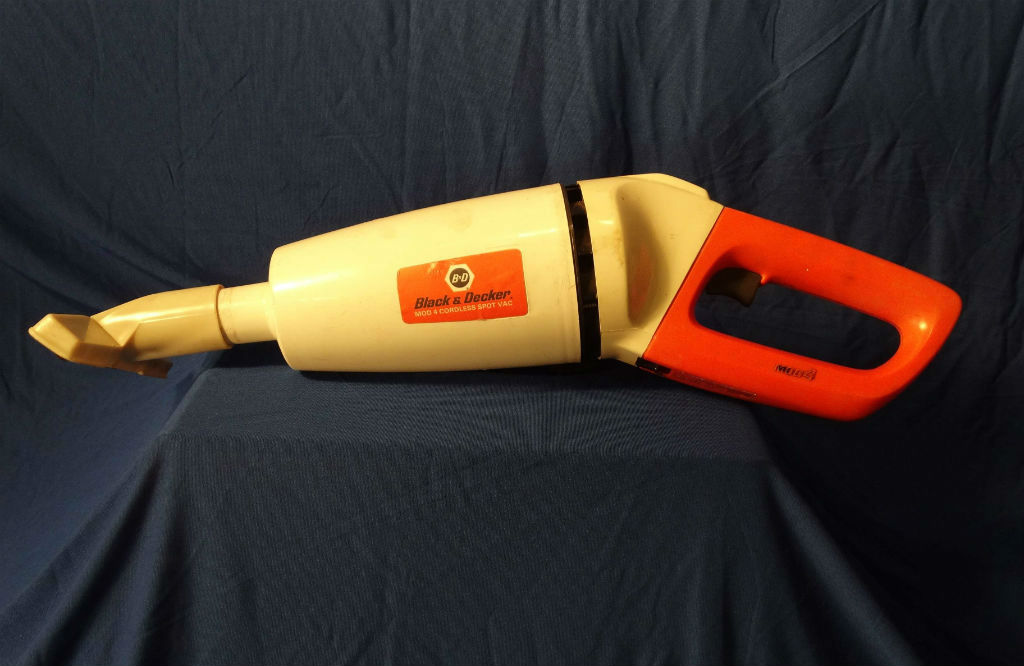
The mod 4 Power Handle Cordless System was innovative, but had disappointing sales. Photos courtesy of Industrial Designers Society of America (left) and Connie Holland/National Museum of American History (right).
One reason, B&D’s market researchers soon discovered, was that consumers would often forget to place the tool’s rechargeable batteries back in the charger after use, defeating its convenience the next time the tool was needed. However, the researchers also uncovered a bright spot: 92% of women users were highly satisfied with the handheld Spot-Vac component of the Mod 4, which they often borrowed from their husbands’ workshops to clean up small kitchen spills. The small vacuum was much easier to use than lugging a heavy canister vacuum out of a closet, unwinding the cord, cleaning a minor kitchen spill, and then rewinding and returning it to storage.
According to Gantz, “B&D learned several important lessons… First, that market research needed to be done before inventing a new product, not after. Second, consumers needed to be educated about new technology.”
With these insights in mind, the B&D marketing department believed the company could sell a revamped stand-alone product based on the Spot-Vac. To lead that effort, Gantz was tapped to be the design chief for a team consisting of B&D product managers, engineers, and designers.
“In contrast to almost all B&D products intended for men, [the new product] needed to be one aimed primarily at women, to be used upstairs in the home, not the basement,” wrote Gantz.
Within a few days, he and his team had an initial prototype, patched together from modified Spot-Vac components and including a wall-mounted charging base. The base addressed consumer confusion over where and how to store and recharge the tool, but the team agreed the product still looked too much like a power tool that belonged in a workshop or garage. To make it more appealing and practical, it had to be completely rethought.
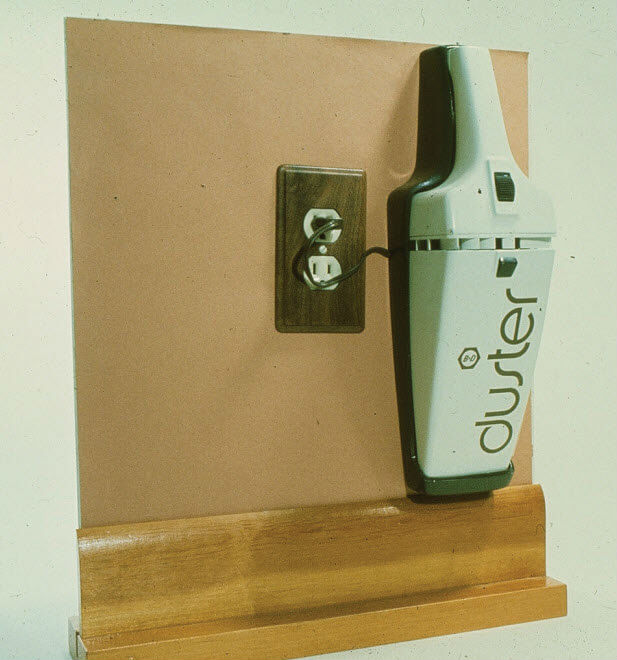
A later prototype for the Dustbuster, which dropped the B&D orange-and-white color scheme and minimized the B&D logo. The designers included the wall and outlet to show how the tool should nest in a charging base plugged into an outlet. This would make it easy for consumers to recharge the device when not in use, so it would be at full power the next time it was needed. Photo courtesy of Industrial Designers Society of America.
Instead of a round mini-vacuum, they changed the device body to be triangular, a nod to the shape of dustpans commonly found in the kitchen. Because it needed to be kept within plain sight, where it would be most useful, they streamlined the footprint to keep it from being knocked off the wall in high-traffic areas. Lastly, they ditched B&D’s bright orange color scheme for a goes-with-anything almond beige. With a slimmed down and neutral appearance, B&D had a new product designed to be out in the open in American homes. Initial market tests with customers were promising, and the sales team doubled their initial sales estimates from 50,000 to 100,000 units. But the product still needed a name.
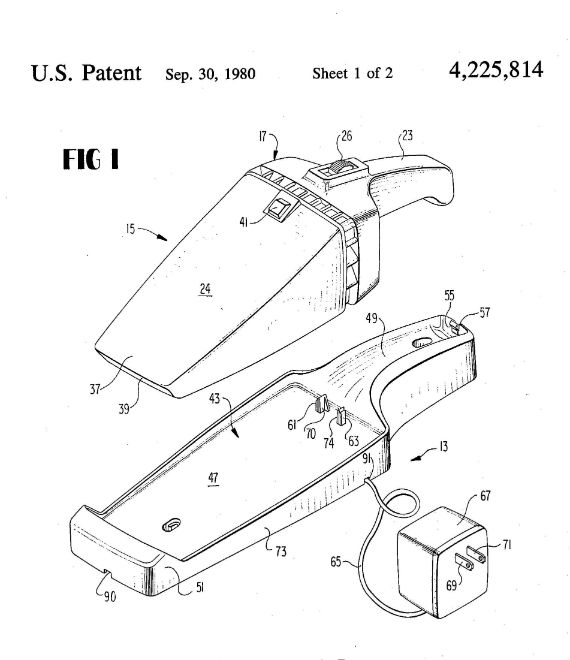
U.S. patent no. 4,225,814 covered the Dustbuster’s unique storing and charging base.
After a company-wide naming contest and some consumer testing, B&D’s logo—long associated with power tools for the male-dominated, do-it-yourselfer market—was reduced to minimal size, and the “Dustbuster” was born.
The Dustbuster’s design was so new and different that Gantz urged B&D to protect it by filing the company’s first-ever design patent.
“This protection would prove invaluable in a few years,” recalled Gantz, “when design patent infringement lawsuits would begin.”
For years, vacuums all had a similar shape: a fat, round body with a long nozzle attachment. But the angled and nozzleless design of the Dustbuster was unique and signaled to customers that the product itself was new and innovative. The design patent—a form of intellectual property protection first started in the United States in the 1840s—protected B&D from others who wanted to copy the vacuum’s new appearance, while a separate utility patent applied to the function-charging base. Indeed, B&D used the protections provided by its patents on the product to block competitors from selling vacuum cleaners in the United States that had a similar appearance.
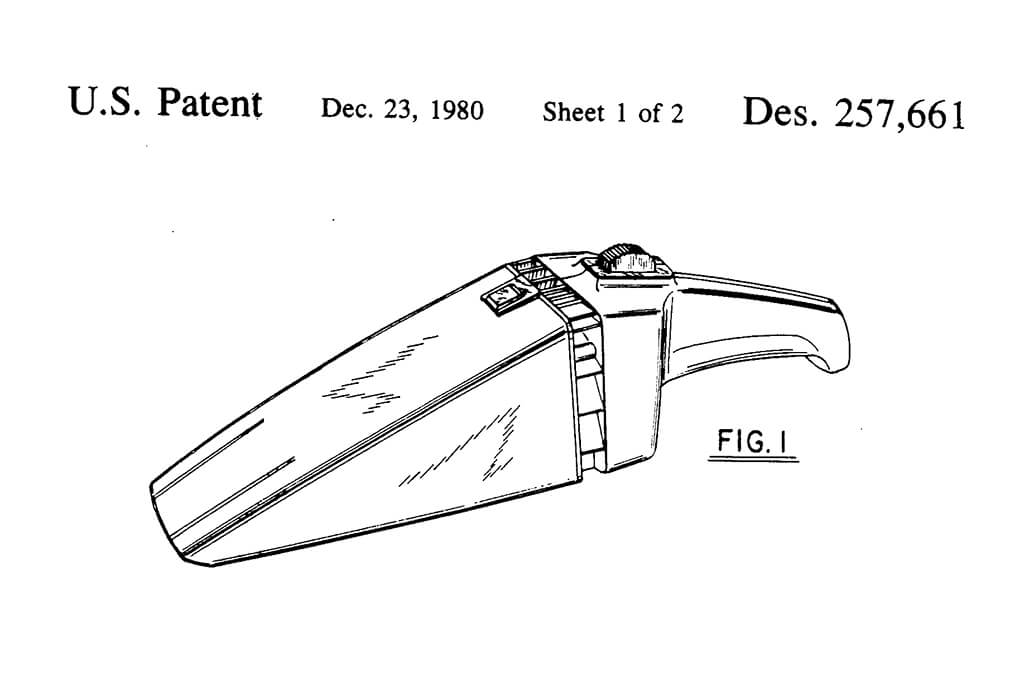
U.S. design patent no. 257,661 protected the Dustbuster’s unique triangular design.
The Dustbuster created a whole new category of cordless vacuums that satisfied consumers’ needs for a quick way to clean up messes and spills. It also opened a new market for B&D and led the company to create a household products division. One of the first products the new division created was a Dustbuster for cars. The company would continue to refine and develop the Dustbuster, including a major redesign in 1986 and subsequent redesigns in the 1990s and 2000s.
By some estimates, more than 150 million Dustbusters have been sold in the 40 years since the product’s introduction in 1979, racking up $6 billion in sales for B&D. An original Dustbuster is even on display at the Smithsonian’s National Museum of American History in Washington, D.C., where it joined two of its B&D “ancestors” in 1995: the first cordless drill and the Moon Drill.

An advertisement showed many possible household messes the Dustbuster could quickly clean up. Photo courtesy of Industrial Designers Society of America.
As Gantz wrote, the Dustbuster “illustrated that a successful consumer product is not the result of an instantaneous flash of genius that many imagine. Rather it is a lengthy and complex process of high stakes trial and error, perfecting and refining a concept.”
From its origins in the first Apollo missions, to the commercial failure of the Mod 4, to its unique patented design and ultimate triumph as a popular household tool, the Dustbuster offers a fascinating example of the journey that innovation can take, and the benefits that consumers can enjoy, when we challenge ourselves to shoot for the moon.
Credits
This story was produced by the USPTO Office of the Chief Communications Officer. For feedback or questions, please contact inventorstories@uspto.gov.
Story by Laura Larrimore. Photo credits noted in captions. Additional contributions by Eric Atkisson, Alex Camarota, and Steve Schatz.
References
Gantz, Carroll. The Vacuum cleaner: a history. Jefferson, North Carolina: McFarland and Company, 2012.
Gantz, Carroll and Steven S. Umbach. The Dustbuster Story: How Black & Decker Moved from the Basement into the Kitchen and Cleaned Up in the Market Place. Accessed June 25, 2019 at https://www.idsa.org/images/pdfs/case_studies_2009_blackdecker.pdf.


